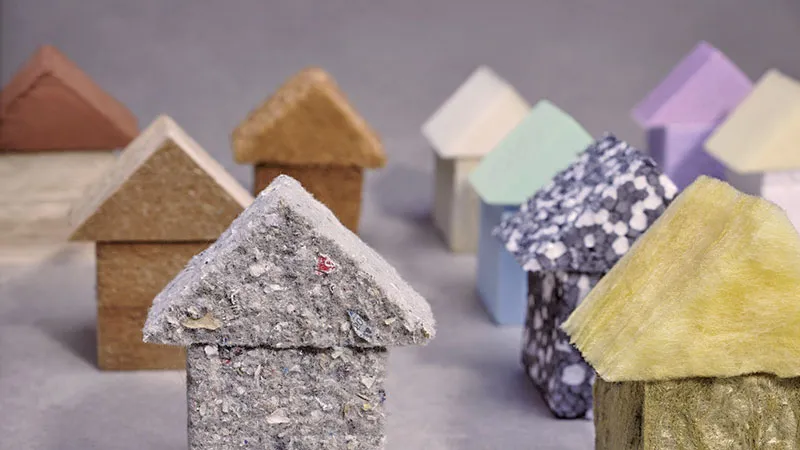Nest Notes
Understanding Home Insulation

November 21, 2022
Every homeowner knows that insulating a home is important for comfort and energy efficiency- especially here in Pennsylvania when winter comes around. But it’s equally important to understand how home insulation works so you ensure you’re taking the right steps to effectively prevent the swap of interior and exterior temperatures.
Insulation provides resistance to heat flow. Heat flow is the movement of warm or hot air to cooler air. The flow continues until there is a balance of temperatures. For example, hot air will continue to flow into your home on a hot day until the inside temperature is equal to the outside. On a pleasant spring or fall day, you might open up the windows to take advantage of the ideal temperature. When the weather is more extreme, however, you need to manage the heat flow.
When you buy a new home, insulation is installed to slow down the movement of heat. Now, heat flow moves in three ways:
1. Conduction: Heat moves through a material like a metal pot absorbing heat.
2. Convection: Heat circulates through liquids and gases; since hot air is lighter, it rises above cold air.
3. Radiation: Heat travels along a straight path and absorbs energy from anything along that route.
So, your home insulation is installed in any place with exposure to heat flow: exterior walls, around the foundation, and in the roof, to name a few. Without insulation, the heat will move through the walls, floors, and ceilings—up from the basement, down from the attic, and in through the walls, doors, and windows. The goal of insulation is to produce resistance to the natural flow of heat.
R-value: The resistance factor
Home insulation products are rated for their thermal resistance factor, commonly known as R-value. This measurement is determined by the insulation type, thickness, and density. To determine how much home insulation you need, refer to a map that shows the R-value zones, rated on a scale from 1 to 7, with colder climates on the high end. Southern Florida and Hawaii score a 1 rating, while Alaska and northern Minnesota earn a 7. Here in Pennsylvania, we sit right around the 5 rating.
You probably hear about radiant barriers. This reflective material doesn’t absorb heat, like insulation does. Instead, it reflects the heat. Radiant barriers are commonly installed on roofs to deflect the heat away from the roof (where it can be absorbed and potentially pass into the main part of the home). According to the U.S. Department of Energy, a radiant barrier on a home in a sunny climate (e.g., Zones 1-3) can reduce cooling costs by 5% to 10%.
Retrofitting an existing home with the correct amount of insulation could require a professional, depending on where and what type of insulation you need. New homes incorporate the standards for home insulation. They also improve the comfort and energy efficiency of a new home by installing moisture control and air sealing.
Spend a little time learning about your home’s insulation and you’ll spend much less later on the energy costs, so you can keep cozy in PA this winter!
The Garman Advantage
Garman's quality craftsmanship extends beyond the parts of the home you can see. Leveraging advances in building science and using products that boost energy efficiency yield homes that require less maintenance, save owners many thousands in energy costs over time, and preserve the value and integrity of the home and the owner’s investment.
· Continuous insulation that outperforms conventional methods, yielding increased efficiency and longevity
· HERS testing ensures that Garman homes are optimized for energy efficiency, with Garman homes 37% more efficient than the average home built today
· Garman measures total air leakage yielding scores 33% better than the industry code
· Garman’s use of revolutionary, precision pre-cast foundation construction techniques by The Superior Wall system provides insulation and flexible expansion capabilities
· Garman partners with innovative brands, such as: Moen, Shaw Flooring, GE Appliances, PPG Paints and Seagull Lighting
· Garman Homes come standard with humidifiers that not only increase climate comfort but decreases the maintenance of walls, paint, and floors
When you build with Garman, you can trust you're getting innovative thinking, techniques and products from building science to design and beyond.

Latest Posts
December 10, 2025
Fall in Love with Carlisle, PA Through These Must-Try Things to Do
November 12, 2025
What’s a “Quick Move-In Home” and Why Might I Consider One?
October 9, 2025
Smart Winterizing Tips to Protect Your Home Inside and Out
September 22, 2025
In-Law Suites Are Surging: Here’s Why (and What You Need to Know Before You Build)
September 9, 2025
Garman Builders Featured in the 2025 Harrisburg Parade of Homes
August 18, 2025
A Home Buyers Dilemma: Should I Build New or Buy Resale?
July 11, 2025
Why The Porches of Allenberry Is More Than a Neighborhood, It’s a Lifestyle
June 17, 2025
The Garman EDGE: Setting a Higher Standard for New Construction Homes
May 23, 2025
Tired of Renting? Here’s Why Owning a Home Makes More Sense
Previous Article


